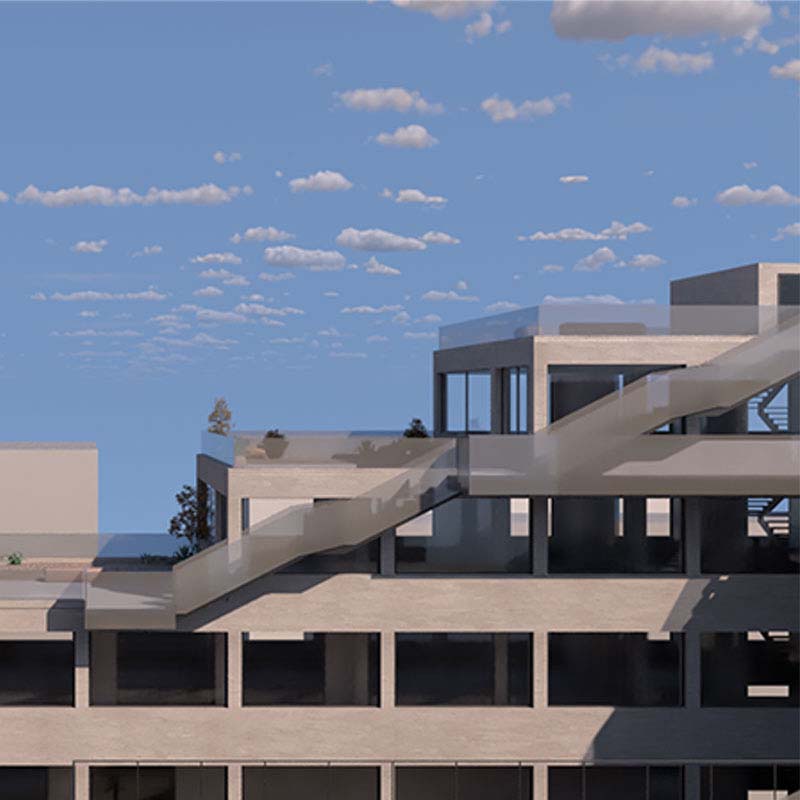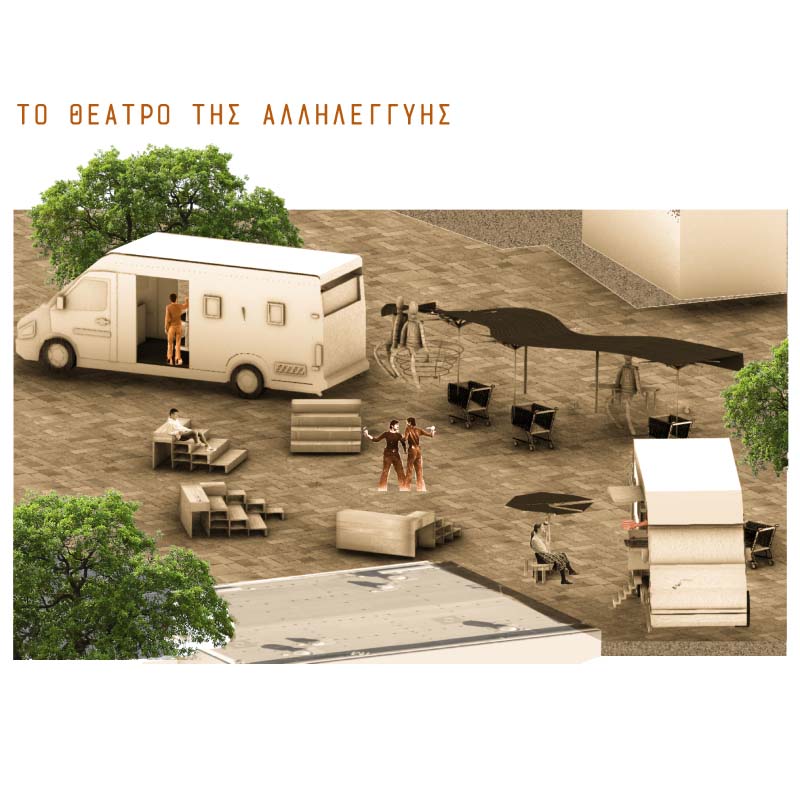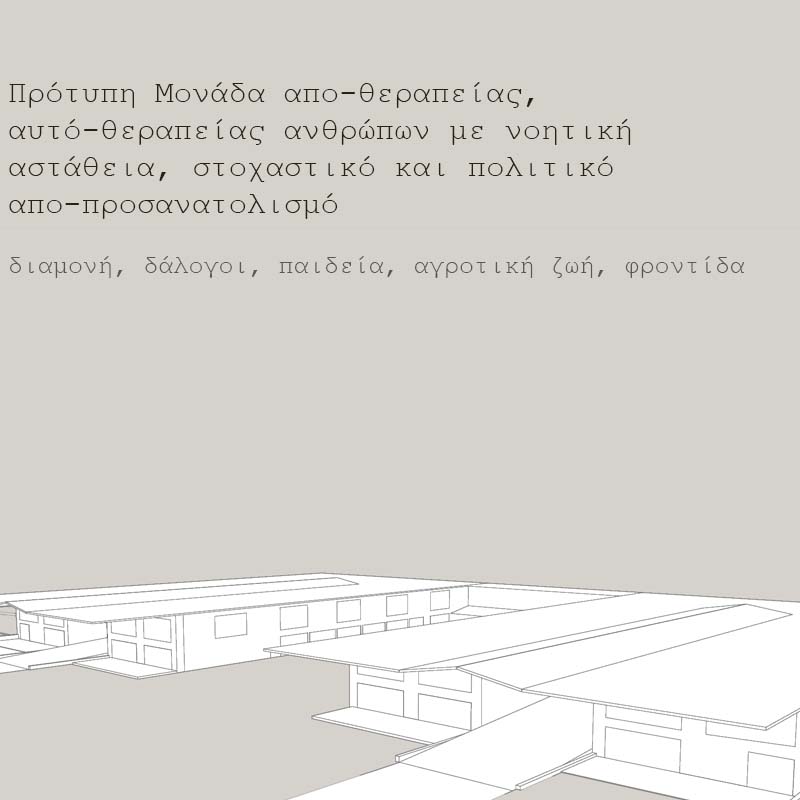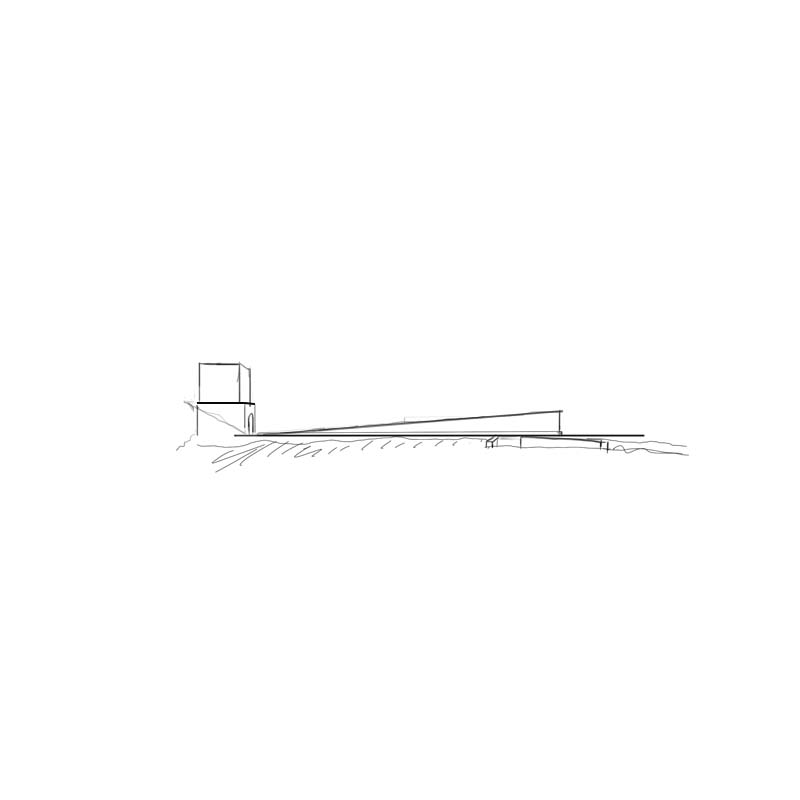

Today, the need for relaxation spaces is imperative, particularly in busy urban areas where overcrowding and a lack of greenery contribute to social alienation and a diminished quality of life. Human-made environments that incorporate water as an element of cleanliness, well-being, and culture offer an escape from daily life. The urban design of the city of Volos limits the availability of alternative options for walking and relaxation without the presence of vehicles. Such activities are primarily concentrated along the city's waterfront, where residents enjoy leisurely strolls with opportunities for relaxation and tranquility, swimming in the sea during the summer months, while younger visitors prefer engaging in play and sports.
The central concept of this thesis is the redesign of the waterfront area from the O.E.A.-N.A.V. Nautical Club to Anavros Beach, based on the needs of local residents rather than touristic objectives. Specifically, the proposal involves the creation of a green wellness space where water plays a central role in the design. This includes facilities for thermal baths and thalassotherapy, infrastructure for cultivating herbs and producing herbal preparations, as well as spaces for walking and recreational activities. The objective is to develop an accessible, attractive, and cohesive public space that integrates seamlessly into the coastal route and the broader urban environment, revitalizing the eastern waterfront of the city.
Supervisor: Micocci Fabiano
Reference Number: 1099


In the centre of Trikala stands the building that houses the Regional Unit of the Prefecture of Trikala, a public building that over the years has presented problems and faced criticism from residents and visitors of the city. While efforts have been made to revitalise the existing building, these are not considered successful. In this diploma project, we propose the reuse of the building's load-bearing structure, carrying out interventions where appropriate and remodeling the spaces within it, while introducing a new conceptual identity, where the structure is not entirely reserved for the administrative functions of the prefecture, but rather restores the memory of the historic market and the commercial activities that evolved in and around it, aiming to create a center dedicated to activities for people, that are rare in the area. The new interventions open the building to the public, with a strong emphasis on the functions that occur on the exploitable terraces, such as a small multi-purpose court for sports activities, wellness facilities or film projections. The main design principles are the creation of multiple levels, an increase in public spaces, easy accessibility for all and the creation of routes, while an effort is made to highlight the intertwined uses, with part of the building dedicated to work and the rest to leisure, intensifying the diversity of the two identities and ensuring that life is maintained on it even after working hours.
Key words: conceptual identity, recreation/leisure, occupation, public spaces, terraces
Supervisor: Paniyiris Costis
Reference Number: 1103


In a record of increasing cases of natural disasters and humanitarian crisis, the need arises to establish a group of volunteer solidarity workers who will appear in a second year, relieving the immediate rescuers and supporting the affected, with nutritional, pharmaceutical and psychological coverage, the latter through the addition of street theater. The research begins in the region of Thessaly, which is plagued by flooding phenomena, showing the accelerating climate disaster. It finds correspondences in the course of the volunteer corps with the wandering theatre troupes, in order to ultimately combine their accommodation practices, so as to enrich and renew their mechanisms of movement and provision of assistance, to add to their services the mental stimulation, through collective design and reuse, the language of theatre, which was the only cultural element that survived in the most difficult situations, and finally to create a network of communication and unity between the volunteers, and the affected people of each area. In this work, the Pelion region is analyzed and in particular the village of Kato Lechonia, which was flooded twice in September 2022. For the needs of the volunteer group, the proposal includes the redesigned transport vans of the volunteers, along with their equipment, a wheeled construction for distributing goods and collecting waste, and a series of objects, the result of collaborative design. and transformation of volunteers with the residents, aiming to use them in the theatrical works that will be presented. The solidarists meet the Balkan ‘bouloukia’ and the ’Theatre du Soleil’, using mechanisms and systems of organization of the troupes, to create this special group.
Supervisors: Phokaides Petros, Gavrilou Evelyn
Reference Number: 1104


Kefalonia, as an outstanding island of immanent vibrations and background of a disastrous earthquake in 1953, has inevitably lost the surplus of its building stock on which the architectural traces of the historical past were impressed. Therefore, this little amount of remaining evidence, which totters scattered in the verdant area of the island, not only needs to be rescued from the erosive onslaught of time, but also to emerge as autonomous entities that can breathe life into themselves again, reviving at the same time the residential areas they form.
The subject of this thesis project deals with the design attempt of a cultural center of artistic creation, a sort of Fine Arts station, on the plot where the fragments of the pre-earthquake residence Valsamakis – Parthenis are located, stored in the protective grip of an old olive grove in Pessada’s village core. The famous painter lived there for a reasonable period of time creating a mural on the main entrance door, as well as numerous works inspired by the specific temperament of kefalonian landscape. Nowadays, in the courtyard of the residence, summer artistic events are organized annually by local government administration.
Since the deafening absence of facilities that can be used as potential artistic cradles is noticeable on the island, the greatest prepossession of this particular study is the production of architectural configurations and ensembles with an initial inspiration by the overall painting work of K. Parthenis, that contribute to the intensification of on-site collective creative activity, to the discreet highlighting of the pre-existing ruins as they emerge interwoven in the light of a renewed use, but also to the harmonious insertion of the above into the archetypal identity of the island’s landscape.
Supervisor: Manolidis Kostas
Reference Number: 1102


The present thesis titled “Social Condenser: Filling Urban Void in Thessaloniki” was prepared by student Christos Daoultzis under the supervision of Professor Iris Lykourioti.
The urban void emerged after the demolition of the commercial market building located at the intersection of 25th Martiou Street and Vas. Olgas Avenue, in the Depo area of Thessaloniki. The market, built in the previous century, played a significant role in the socio-economic processes of the region.
Initially, thorough research was conducted on key historical elements that shaped Thessaloniki’s development, including its urban planning and street layout. The study of the plot included an investigation of its history and property status. Architectural plans of the former market and regulatory acts governing its development were retrieved. This was followed by an analysis of both the immediate and broader areas surrounding the plot.
Based on the findings, a proposal was developed to fill this urban void with the construction of a building functioning as a social condenser.
Since the former commercial center was once a bustling hub, it was deemed essential to preserve the market element. Additionally, research revealed that the construction of schools had once been planned for the broader area but was never implemented. The proposed social condenser aims to merge economic and educational dimensions by combining commercial and educational activities, offering a space that functions both as a market and as an adult training institute, creating a vibrant hub for social interaction and development.
The synergy between these two core aspects—learning and economic activity—will coexist, fostering a cycle of knowledge and goods exchange. The building's multifunctional and versatile character makes it the most appropriate solution for addressing this urban void, while also contributing to the social well-being of the area.
Supervisor: Lykourioti Iris
Reference Number: 1098


Mental health is not only related to psychological conditions, gender, age, etc. but is an integral part of environmental conditions.
As humans, we communicate with our surroundings through the senses, we touch, smell, see, hear, taste the world around us.
Therefore, by designing, with the human being in mind and how a simple shell can affect psychology and psychosynthesis, the composition of a Psychiatric Clinic is created. For people whose mind functions differently from the "norm" (non-neurotypically), an effort is made to satisfy the senses, socialize, and be productive, within the safety of a controlled environment, without setting mental restrictions and boundaries.
The purpose of architecture is to move us. Architectural emotion exists when the work rings within us in tune with a universe whose laws we obey, Recognise and respect. –Le Corbusier
Supervisor: Stylidis Iordanis
Reference Number: 1107


The potential activation of historically significant agricultural practices will be examined within a context of active local tradition and history. Our focus is on a specific mountainous area of a remote island location. Specifically, in the countryside of the island of Nisyros, within the semi-mountainous settlement of Emporios. In this area, spatial agricultural-climatic qualities have been observed, primarily resulting from the proximity to the caldera (cliff, edge of the volcanic cone/peak), which has historically contributed to fertile soils. The island’s distinctive topography is shaped by intense volcanic activity as well as human intervention in the landscape, through the creation of continuous dense agricultural terraces (stone-built terraces). This agricultural technique, characteristic of the entire island, is part of its already documented and recorded valuable cultural heritage.
Our proposal describes and illustrates the creation of an agricultural complex operating under a circular economy model, centered around a wine production and processing unit. This composition includes various cultivated areas, the primary winemaking facility, clusters of temporary accommodation, and networks for exploration and wandering. The aim is to foster experiential engagement for some or more visitors with the wine production process and its accompanying products, as well as to enable educational and cognitive interaction with the natural environment and the land.
Supervisor: Stylidis Iordanis
Reference Number: 1108

